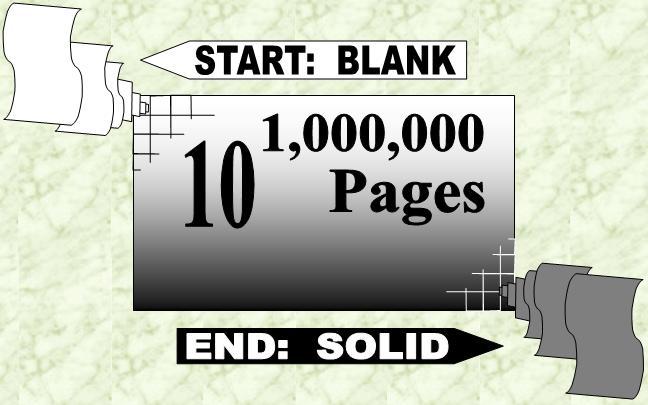
QUESTION: How does one make a map of "Everything?"
of information (all 10 1,000,000 of them), and paste their
edges together in an orderly fashion.
So what does this answer mean? There's something more that can be done with those mega-digit number of pages of information. Since we're keeping things sort of mathematical (arithmetically counting the unique pages), we can now turn to geometry and create a very intriguing geometrical object; a mathematical object that represents information. Here's how it's done ...
FIRST:
Line up all of the pages from the least marked page to the most marked page. That is, we start with the blank page, procede through degrees of increasingly marked up pages, and finally finish at the solidly filled-in page. Before going onto a a mega-digit number of pages, lets first see how this looks for a few pages.

SECOND:
Rearrange the above sequence of pages into a rectangular sequence, beginning with the blank page at the upper left corner and proceding horizontally for each row until ending up with the solidly filled-in page at the bottom right corner.

THIRD:
Now lets turn to the mega-digit number of pages and do the same thing. If we did NOT shrink down the pages then the rectangular map would be larger than the Observable Universe. On doing a little bit of mathematics (1), and shrinking down all those pages we can begin to see an overall pattern.

The result is an informational map provided by a mega-digit number of individual unique pages of information. This geometric object is called a grand map.
(1) In order to see that there does indeed exist a pattern to all those uniquely marked up pages it becomes necessary to alter the scale of the map from linear to logarithmic, else the map would look completely dark to the eye (mathematically it is not).